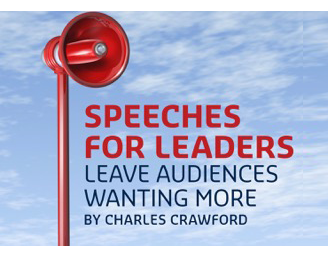Here is the link to the video of my TEDx presentation in Krakow on the Physics of Diplomacy.
Pretty gruesome watching yourself in action. But I have done so in the name of Science. Some interesting public speaking points emerge.
First, I don’t want to cross swords with Max Atkinson in his many and varied expert criticisms of PowerPoint. This presentation shows the strength and weakness of the medium.
Above all, PowerPoint is kit-sensitive. Here the organisers did not provide a small laptop so that I could see what was up on the large screen behind me, hence I was having to look backwards and up to see what the audience were seeing – that rather broke the flow and the engagement with the audience.
Plus the speed at which the slides appear on the screen bears no necessary relationship to the way the presentation has been organised – it depends on the system being used for clicking on the slides and beaming them to the screen, and the efficiency of the presenter in doing the clicking right on cue. Here there were one or two awkward gaps/glitches.
Last but not least, PowerPoint is not easy to work with video clips. You need to be a lot better with a computer than I am to get that 150% right even in theory, let alone on the day. So I don’t risk it. A pity, since short video clips are a terrific way to explain a point.
Nonetheless, the slides in this case added value and engaged the audience with both eyes and ears. They were clear/readable and above all included numerous unexpected pictures, helping complement the presentation itself. Always good practice to let pictures rather than words make your points and tell your story.
Otherwise it comes across quite well, apart from one ghastly embarrassing inadvertent slip, which every Pole will spot – the perils of not reading from a prepared script.
Eye-contact with the audience seemed good, although I seem to break into a strange disconnected smile rather too often. I also might have done better to change tone of voice rather more, to add emphasis to help bring out key messages, and to signal in the presentation more clearly the major turning-points in the argument. I probably need voice coaching.
Still, there is only so much you can do in 18 minutes, and I did my honest best. Unlike some speakers, I had worked on the material to be able to finish right on schedule – that takes some practice (ie pacing yourself to speed up or slow down as necessary, and having ready some material to add or jettison as necessary).
One last lesson for speech-writers, or the offices of people having to give major set-piece presentations. It makes a big difference knowing how the venue will be set up on the day.
Here at TEDx Krakow we presenters were in a tall steep auditorium, looking up at rows of people with the large screen behind us. That made it all the more important to think about engaging in voice and eye-contact with the people right in the top far corners and in the immediate/close front rows alike.
Those speakers who did that were the most successful – those who came across as rather daunted by it all were not. In other words, someone who has prepared a presentation for a large seminar-style format but finds that a quite different venue is being used may struggle to adapt a prepared text – and can end up seriously embarrassed.
Last but not least, my Polish is getting embarrassingly rusty. Niestety.










